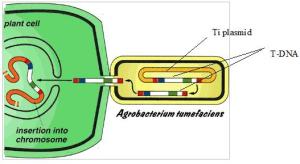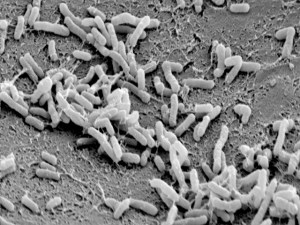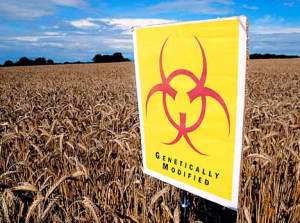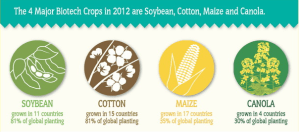Genetically Modified Plants: Grade 9 Understanding for IGCSE Biology 5.15 5.16
You should understand how bacteria can be genetically modified to produce useful proteins (e.g.human insulin, human growth hormone, vaccine antigens etc.) – see previous post if you are unsure. In this post, I will try to explain how transgenic plants can be made and indeed what kind of genes might be added to plants to benefit humans. Genetically modifying a plant will be a more complex process since plants are multicellular and so many millions of cells need to be genetically altered.
Luckily a vector exists that can transfer genes into many varieties of plant. Agrobacterium tumefaciens is a species of bacterium that contains a plasmid that can be transferred into plant cells. This plasmid (called the Ti plasmid) can be cut open with a restriction enzyme and a new gene inserted with DNA ligase.

The Agrobacterium that have been genetically modified will then infect the plant tissue and then when this plant tissue is cultivated using the micropropagation techniques you learned about with cauliflower, a whole GM plant can be produced.
Genes can also be inserted into plants by a gene gun. A gene gun literally fires “bullets” made of tiny particles of gold that have been coated with the required DNA and while Agrobacterium does not infect all species of plant, the gene gun can work to get foreign DNA into any plant species.
What are the potential advantages of GM crops?
Resistance to Herbicide: some crop plants have been altered so they contain a gene that makes them resistant to a particular herbicide. This means a farmer can spray the herbicide on his crop without risk of harming the crop plant.
Resistance to Frost: some GM plants have a gene from a species of Arctic fish that codes for an “antifreeze” chemical in the fish blood. Plants that contain this gene will be frost-resistant and so produce can be transported in refrigerated containers without damaging the plant cells.
Golden Rice: rice plants have been altered so they contain genes that make the molecule beta-carotene. This is the orange pigment found in carrots and is a precursor for making vitamin A. So in populations who rely on rice as a staple component of their diet, the rice will be more nutritious and so prevent the night-blindness associated with vitamin A deficiency.
Antibody production: plants may also be genetically modified to produce antibodies for treatment of human disease.





